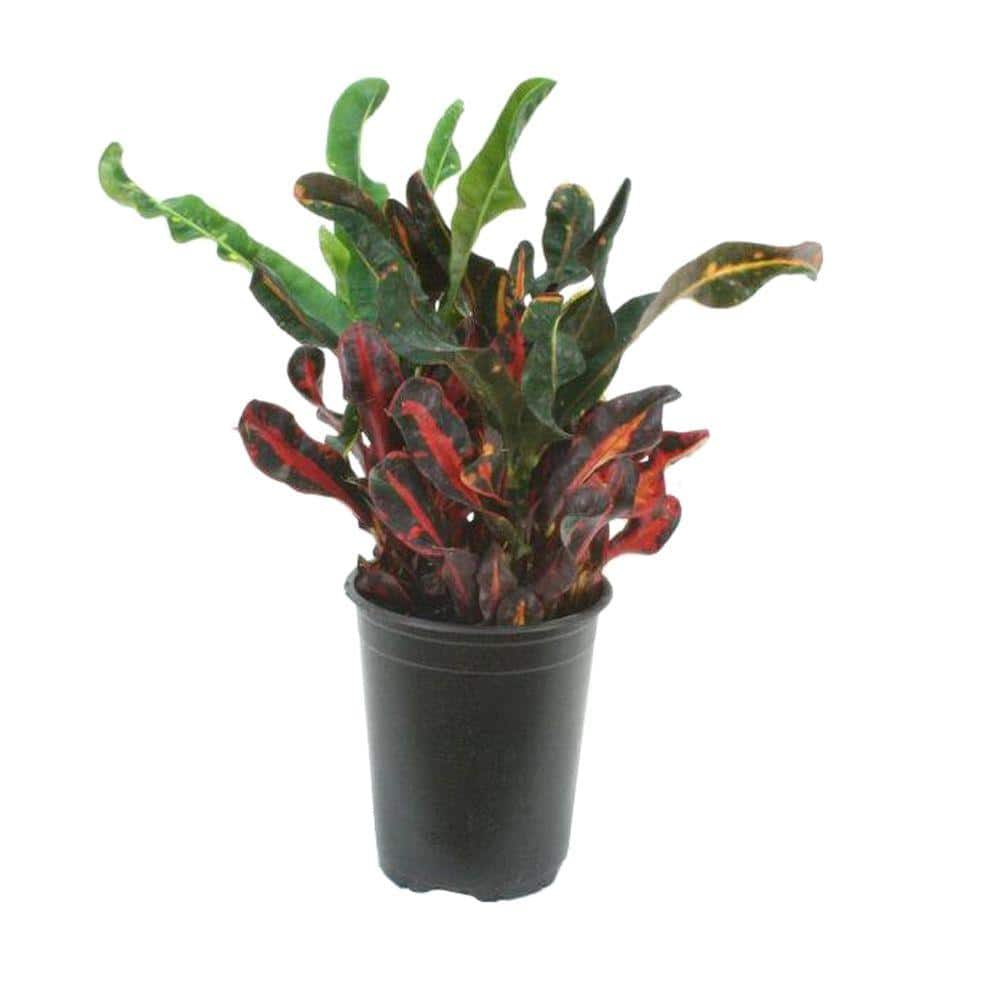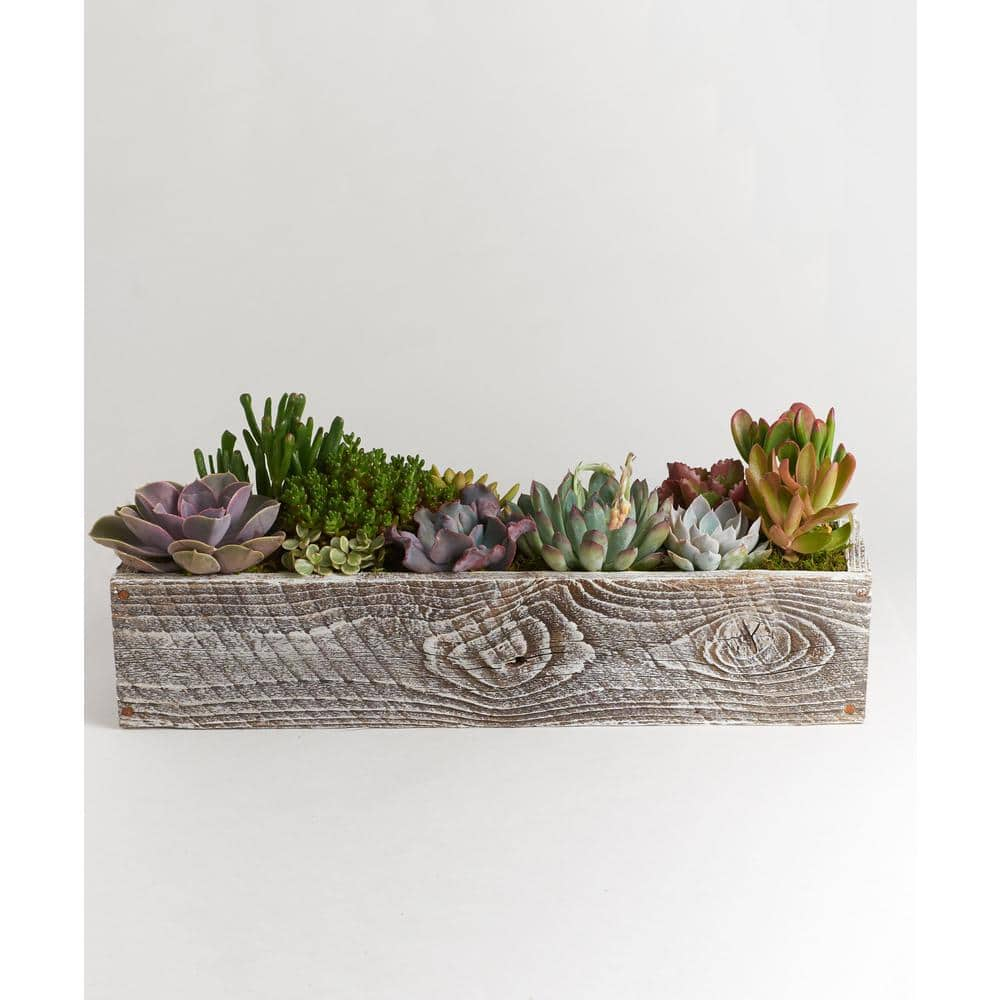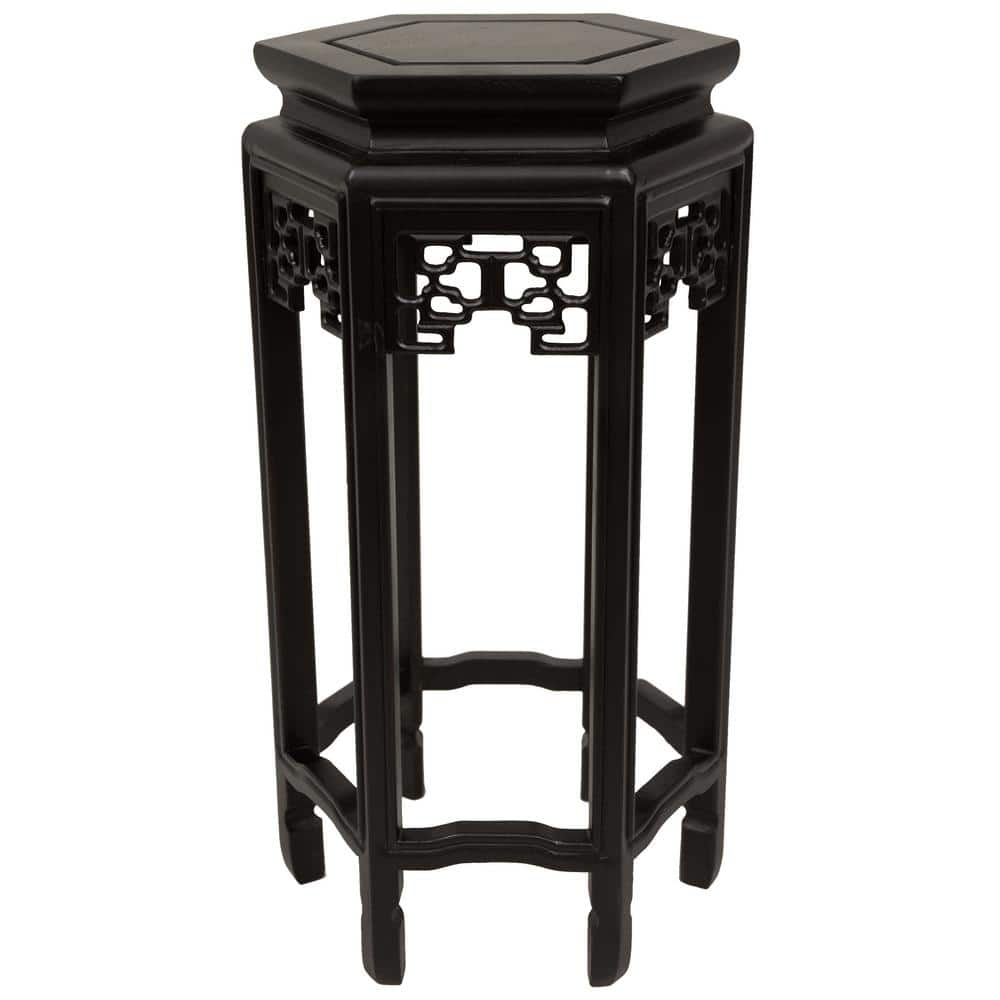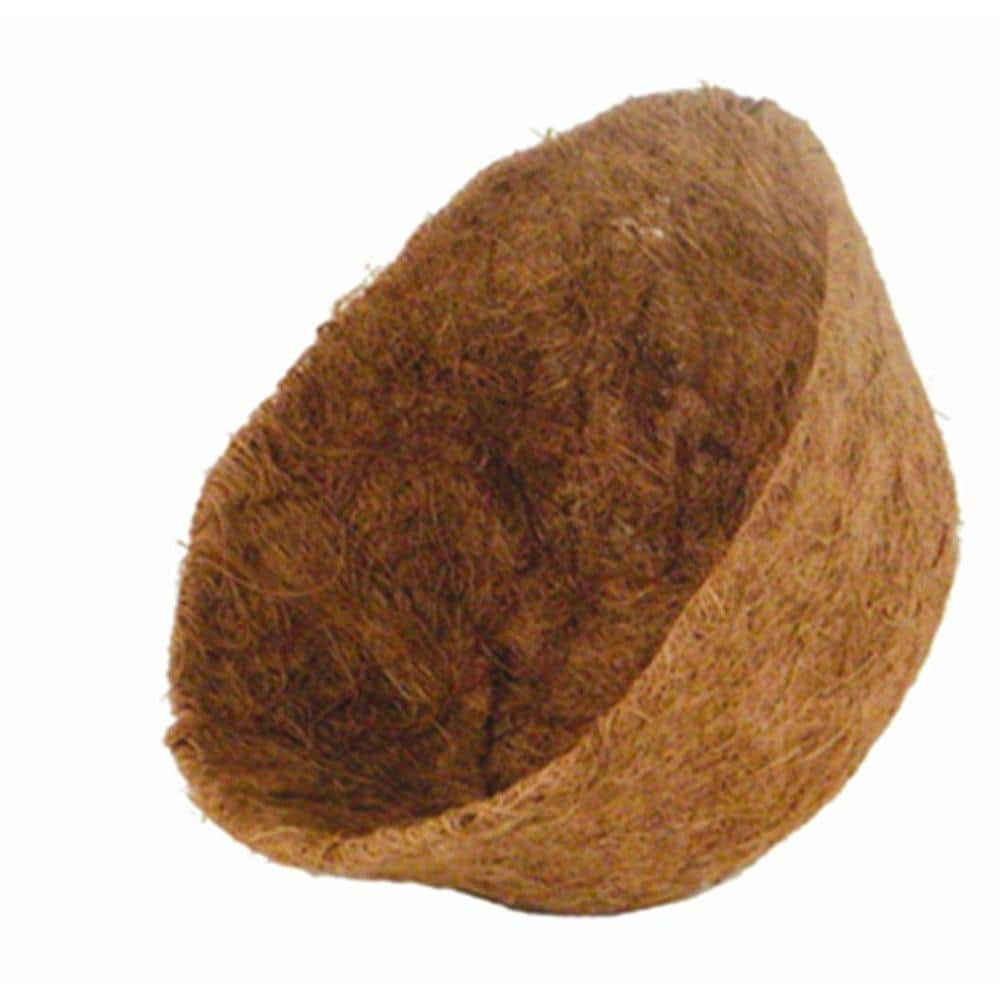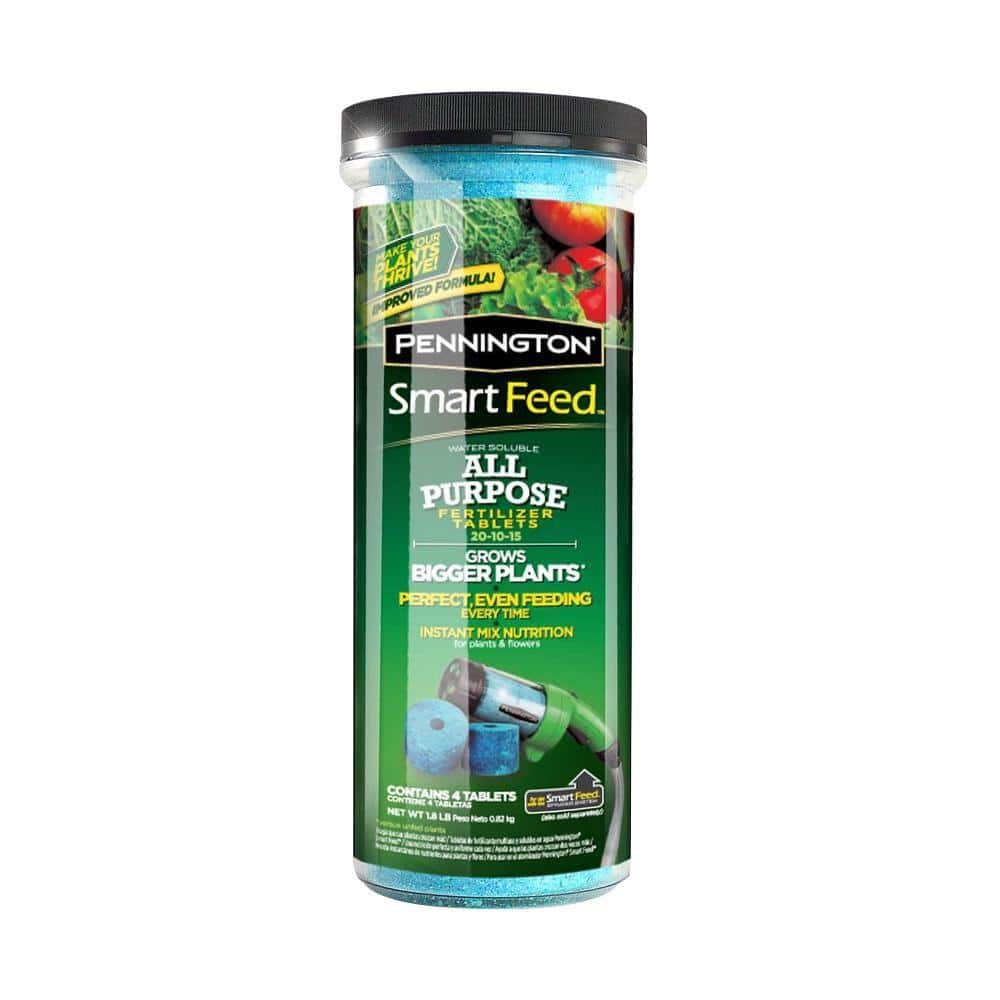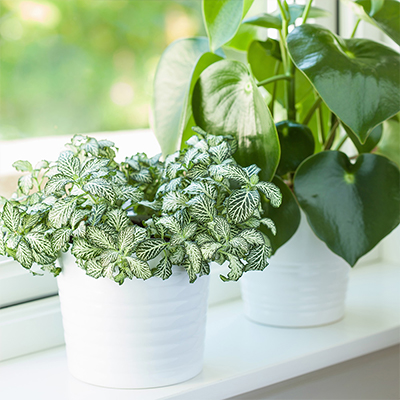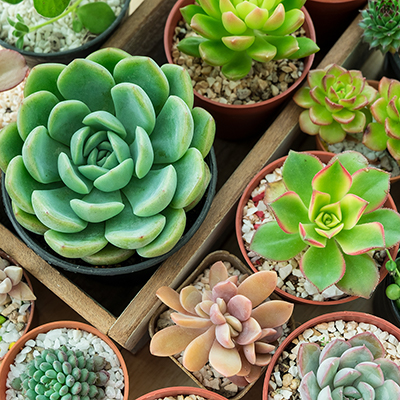9 Easy Indoor Vine Plants

Last updated September 7, 2023
Bold indoor vines are an accent that's here to stay, thanks to design trends like Bohemian Chic and Coastal Cottage. You can't go wrong when you decorate your home with trailing houseplants. Park them on shelves or cascade them over edges and door frames Place them across shelves or tables. Read on for nine of the easiest ones to grow and get tips on caring for vines indoors.
Table of Contents
Pothos
English Ivy
Burro’s Tail
Purple Heart
Creeping Fig
String of Pearls
Pothos
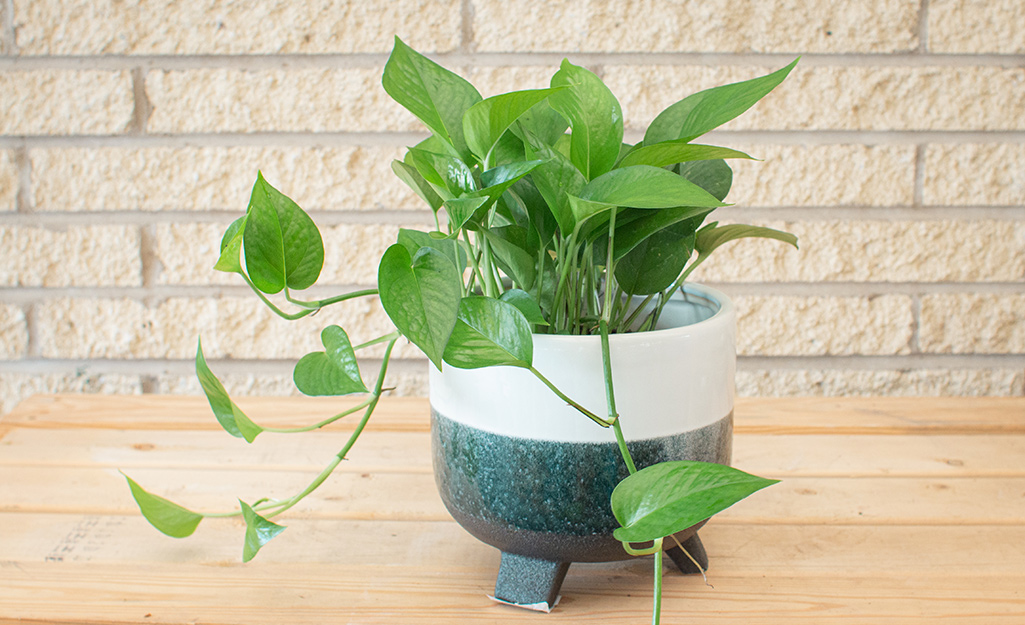
The heart-shaped leaves of pothos grow along stems that never seem to end. Call attention to the pothos’ cascading leaves by putting yours on top of a plant stand in an area that gets indirect light.
To quench a pothos' thirst without drowning it, water only when it dries out. Trim the plant to a bushy shape once it sends out long stems so that it keeps its full look.
Tip: Because this plant is usually hardy at temperatures as low as 30 degrees Fahrenheit, pothos can go outside for part of the year. Just double-check the plant tag before you take it outdoors.
English Ivy

English ivy shows off spade-shaped leaves that often have variegation. As a houseplant, the ivy will grow even during the winter months.
Water English ivy about once per week. If you have hard water, consider a water softener filter. The extra minerals in your tap water could get in the way of growth. Although English ivy can handle less light than some other vines, its leaves may turn colors if it doesn't get enough sun.
Tip: English ivy can become home to pests called spider mites. Not over watering can help keep them away. If you notice spots or discoloration on the leaves, you may have the pests. Use organic pest control products designed for mites to deal with them.
Burro’s Tail
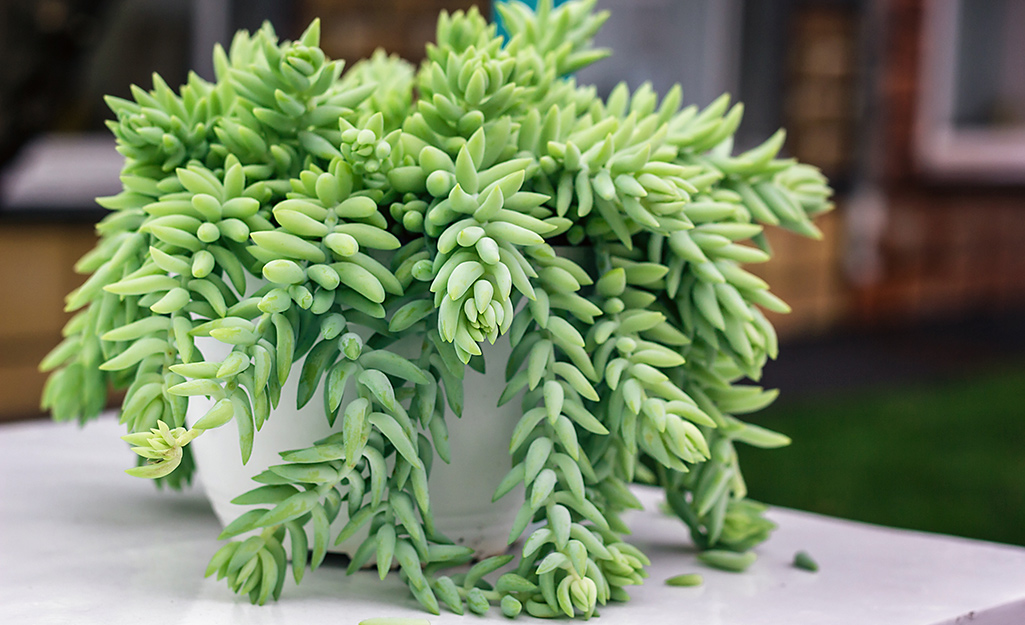
Sometimes called donkey's tail, burro's tail is a variety of sedum with waxy bright green leaves that trail in thick rope-like clusters. Because it looks like braised hair, it's a fun way to top off a head-shaped planter.
Indoors, this vine can grow up to 24 inches long. Show off its long vines by placing it in a hanging planter. Like other succulents, burro's tail likes to keep its feet dry, so be careful not to over water. A succulent is a plant that has thick leaves that store water.
Burro's tail will grow best when it gets spread-out or is in
diffused light. LED grow light kits are a great way to provide the right lighting for your vine.
Purple Heart

Fall in love with the purple and silver stripes found on the leaves of a purple heart plant. Like arrowhead plants, this vine gets its name from the shape of its foliage. Some varieties also produce pretty purple flowers.
To keep the colors of a purple heart plant vivid, mix full and partial sun by moving it around. Feed with liquid fertilizer monthly to support growth. Water the purple heart whenever the soil no longer feels moist.
Creeping Fig
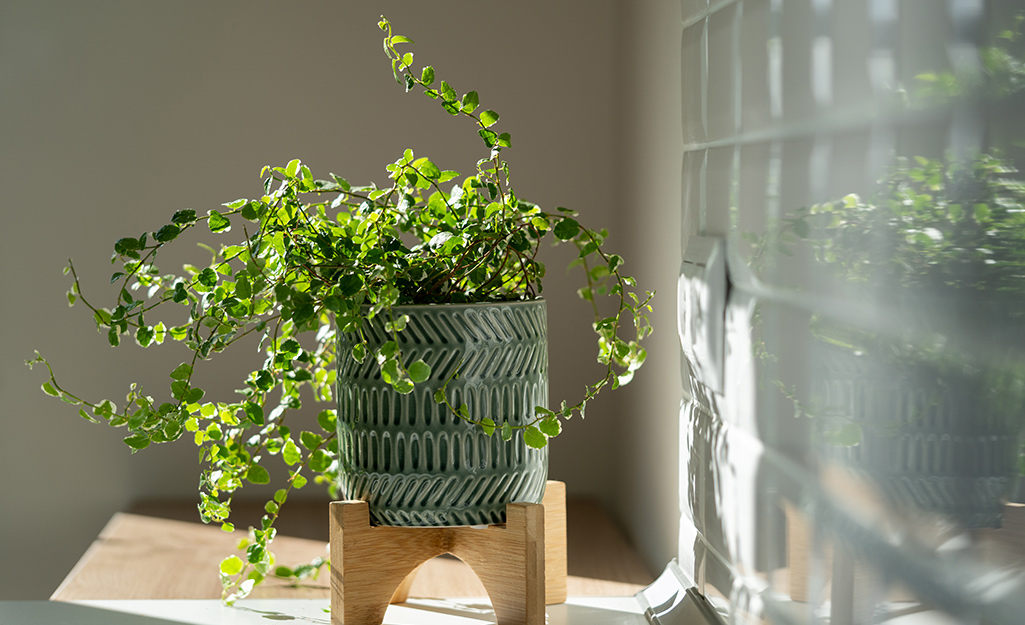
This tiny ficus sends out papery leaves that become thick and waxy over time. Colors include shades of green and variegated varieties with hints of yellow. Variegated means a plant’s leaves have patches or streaks of a second color.
With its tiny suckers, the creeping fig will attach itself to metal, stone, wood and other materials. As a result, this vine is a good option to use on a trellis indoors to create a DIY green wall. Creeping fig only needs occasional watering to grow lush. The plant prefers indirect light, so place it in a bright spot but not directly in the sun.
String of Pearls
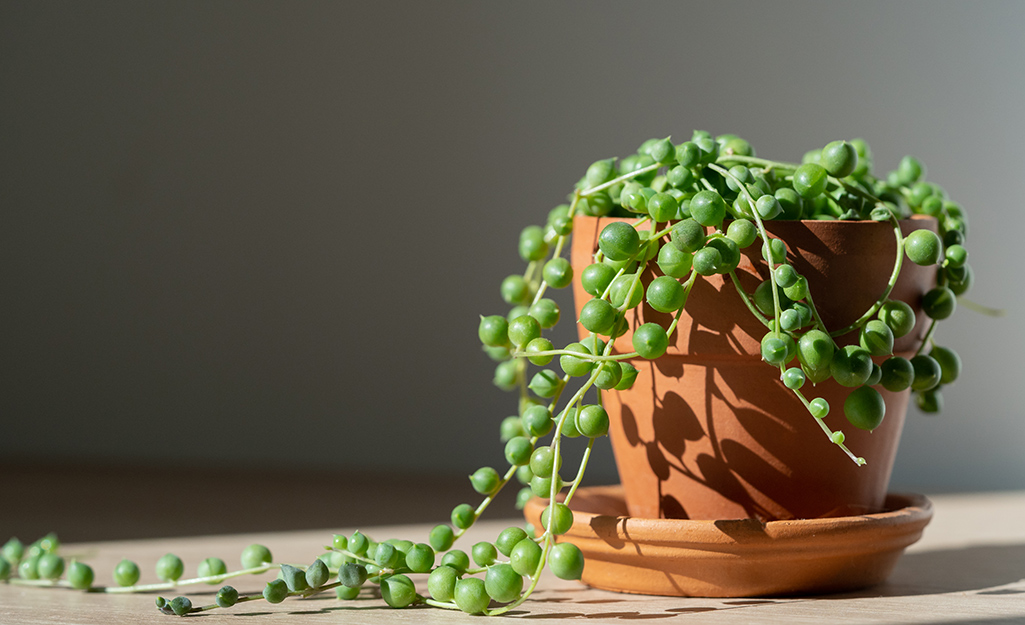
The round leaves of the fleshy, trailing string of pearls look like small beads. Like the burro's tail, it doesn't need much water and will thrive under grow lights.
If you're looking to create a mixed planter, the string of pearls makes a great neighbor for other plants, like succulents. Just be sure to choose ones with similar light and water needs to keep every plant happy.
Arrowhead Plant
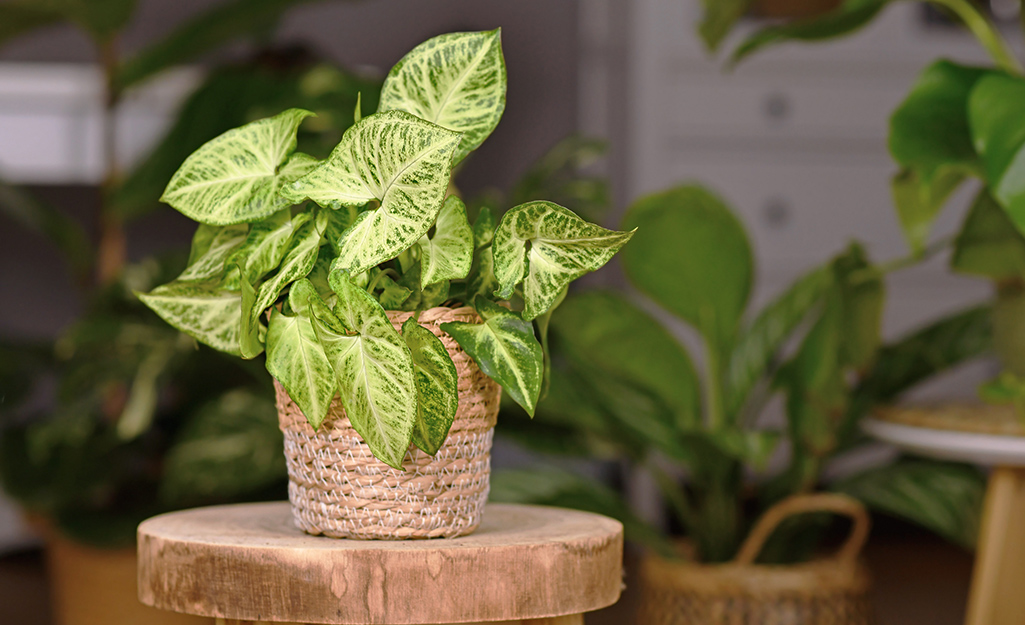
The arrowhead plant gets its name from its triangular leaves. Outside, the arrowhead can grow to 3 to 6 feet in length, but as a houseplant it will be smaller. Get your arrowhead plant off to the right start with potting mix that drains well.
Because this vine doesn't like to be chilly, keep your thermostat set to 60 degrees Fahrenheit or above. Arrowhead plants like bright spots but some varieties do better with direct sun exposure. Check the plant tag to find out the light needs of your plant.
Hoya
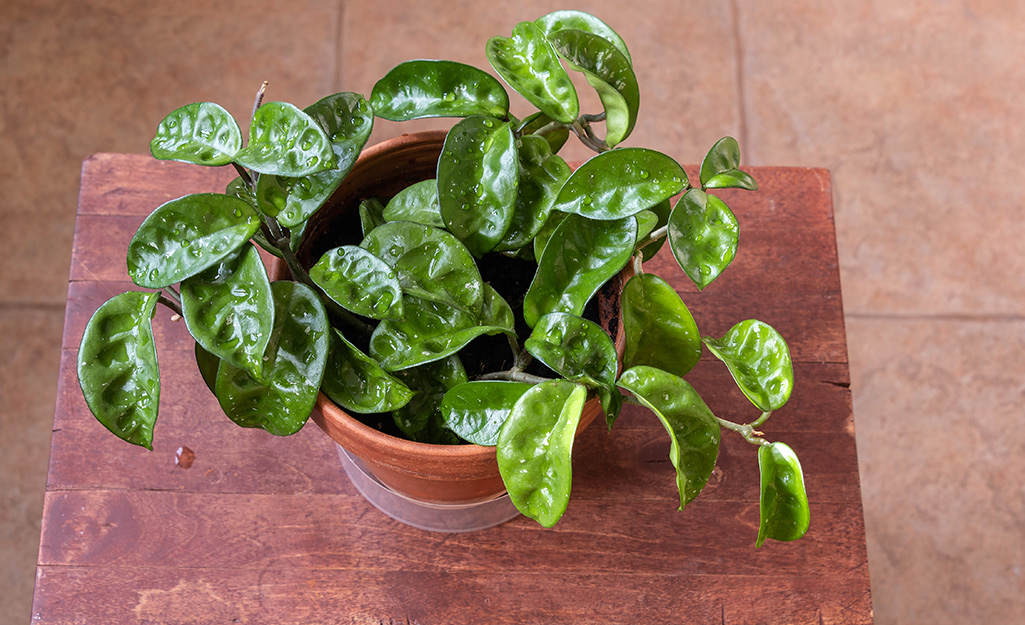
Bring a little of the tropics to your home with a hoya. There are many varieties of this vine to choose from, and some produce pink and maroon flowers for added pizzazz. One of the biggest benefits of this houseplant is it usually doesn't outgrow its pot too quickly. Often, you can keep it in the same one for two or more years. Be careful not to over-water a hoya plant. Wait until the soil is no longer moist to give the vine a drink.
Tip: Liquid fertilizer helps keep hoyas growing, especially during hot summer weather.
Jasmine
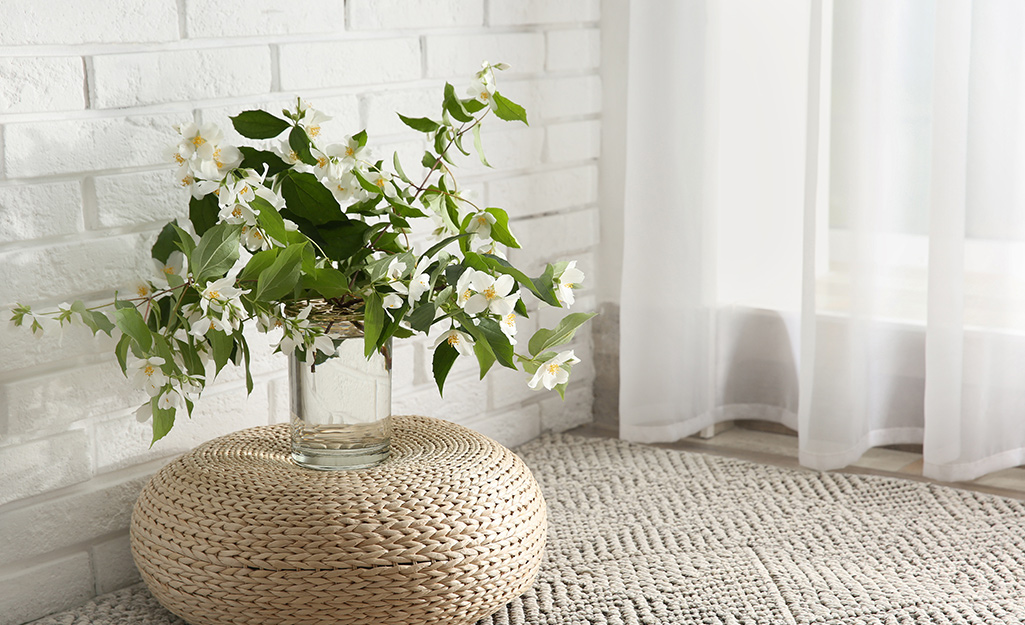
A Jasmine vine will bring the beauty of flowers to your home. When in bloom, jasmine has a pleasant scent that many people love. Even indoors, jasmine can grow 12 to 24 inches per year. To keep jasmine blooming, prune it with pruning shears before spring. If your plant isn't producing flowers, it may be too hot in its growing spot. Try moving it to a south-facing window to cool it off.
From late spring through fall, Jasmine can do well with up to four hours of direct sunlight per day. It needs less direct light in the winter, so give it a second home when the weather gets cold.
Tips for Growing Vines Indoors
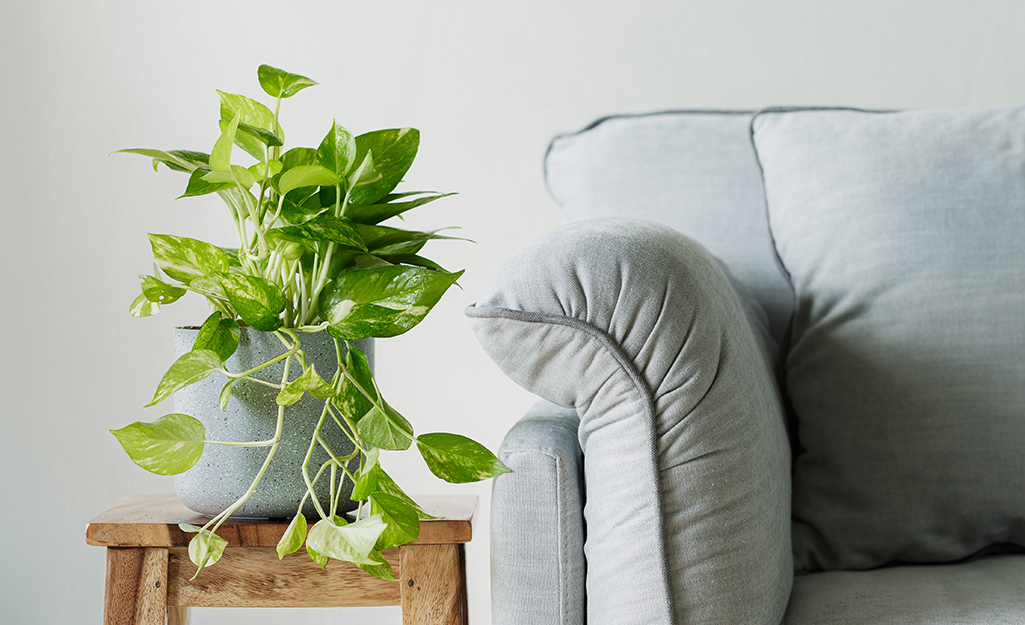
- Water when the soil feels dry. Overwatering kills plants.
- Let the vines cascade from shelves, across side tables or in a sunny window. Alternatively, let vines climb along window and door frames or train them to climb a chain.
- Most indoor vines need a minimum of four hours of sunlight daily. Read the plant tags to determine the needs of your plants. It may take a few tries around your home before you find the right light for your plants.
- If your plant isn't thriving, it may be time to repot.
You've now met nine easy-to-grow vines for indoors, so it's time for the fun to begin. Choose your favorite and stock up on the right gardening tools, potting soil, planters and fertilizer to care for it. The Home Depot has everything you need to grow your vine. Shop online and in stores. Use the Home Depot Mobile App to locate products and check inventory. We'll take you to the exact aisle and bay.
